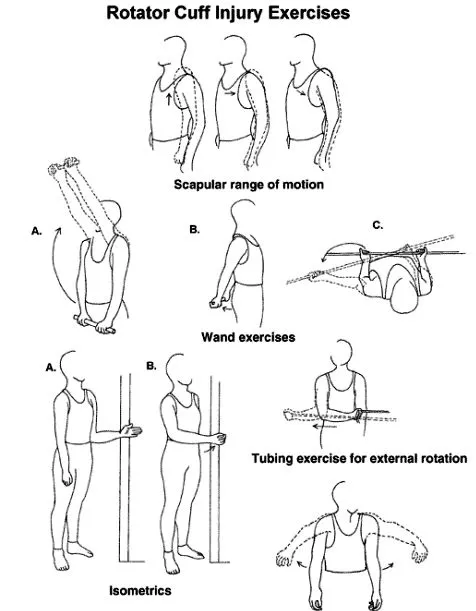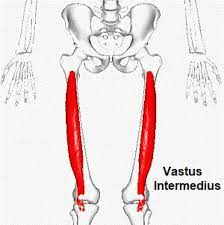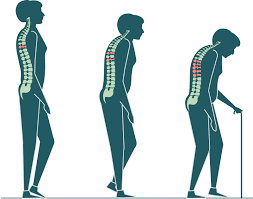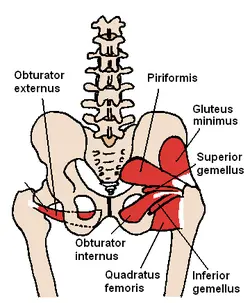Best Exercise for Rotator Cuff muscles
The rotator cuff is a group of four muscles that surround the shoulder joint, providing stability and facilitating movement. These muscles are essential for many activities, such as throwing a ball, lifting weights, and even reaching for objects on a high shelf. However, they can become weak or injured due to overuse, poor posture, or aging, leading to shoulder pain and limited range of motion.
Strengthening exercises for the rotator cuff muscles can help improve shoulder stability, prevent injuries, and reduce pain. In this context, I can suggest some effective exercises to strengthen the rotator cuff muscles, such as external rotations, scaption, and prone horizontal abduction. However, it is essential to consult with a healthcare professional before starting any new exercise regimen, especially if you have a history of shoulder pain or injury. They can guide you on the appropriate exercises, sets, and reps to help improve your shoulder strength and function safely and effectively.
Table of Contents
Introduction:
In the human body compare to all joints the glenohumeral joint is the more flexible. There can be overuse of this joint, which makes it very prone to injure the shoulder muscles and other parts of the shoulder joint. People can help averting injuries by performing exercises to maintain the rotator cuff muscles strong and flexible.
Rotator cuff muscles and their action:
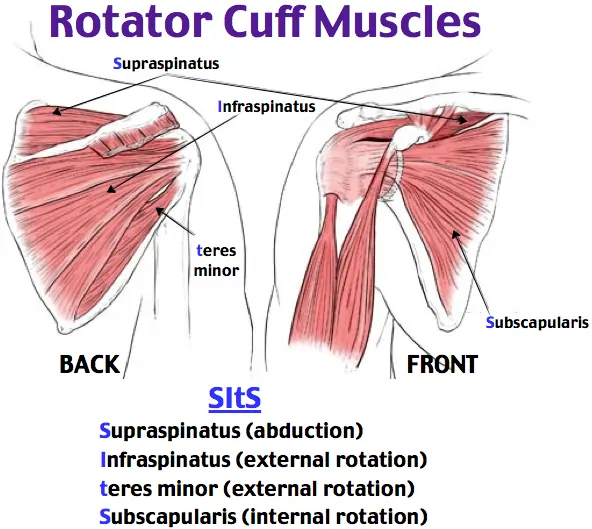
A rotator cuff is a group of four muscles in the glenohumeral joint that allow a greater range of motion by maintaining the stability of the glenohumeral joint. Here we explain the rotator cuff muscles and their action :
- Subscapularis: internal rotation and lifting of the arm
- Infraspinatus: externally rotate your arm in the shoulder socket.
- Teres minor: helps rotate your arm
- Supraspinatus: controls arm abduction (holding your arm out straight, away from your body).
Rotator cuff injuries:
- Some sports activities like tennis or baseball can cause rotator cuff injuries.
- Most rotator cuff injuries occur due to overuse of the shoulder joint from repetitive overhead movements.An individual who used repetitive overhead movements is more susceptible to rotator cuff injuries like athletes who play baseball or tennis and people with jobs like house painting or construction.
- Rotator cuff overuse often induces impingement, which is the pinching of any of the rotator cuff muscle tendons, or other soft tissue, that go through the space between the humerus and the scapula.
- Impingement will occur when muscles strain and other overuse injuries cause swelling in the shoulder joint, reducing the space between these two bones.
- Sometimes People may tear one of the tendons in the rotator cuff, although this is less common than overuse injuries. Rotator cuff tears can be very painful, but many times these tears will heal with some immobilization and strengthening exercises.
Common clinical tests used to diagnose Rotator cuff tendinopathy:
Some of the most common tests used by healthcare professionals in diagnosing a rotator cuff injury are listed below.
- Hawkins-Kennedy test – Hawkins-Kennedy test helps to assess and diagnose shoulder impingement syndrome.
- Neer test – Neer test can assess and diagnose shoulder impingement syndrome.
- Empty can test – This test is can be used to assess the shoulder for rotator cuff damage and suspected rotator cuff tears.
- External rotation – Pain/weakness with external rotation
- Painful arc sign- This test can assess a potential tear of the rotator cuff.
Benefits of rotator cuff muscle exercise:
- This exercise will help to build muscle located in your shoulder joint.
- Helps to decrease pain over the shoulder joint: This exercise will strengthen the muscles, and strong muscles provide your joint with better support. One danger of shoulder arthritis is that every person avoids activities that cause pain or discomfort, causing shoulder muscles to get atrophy.
- Helps to maintain function and daily living activities like pushing and pulling objects.
- Helps to support healthy cartilage. Joint cartilage needs movement and a certain amount of stress to stay healthy.Synovial fluid is collected in cartilage like water in a sponge.
- Helps to enhance the shoulder joint range of motion and its function.
- This exercise gives strength and it can help you to prevent bone dislocation and friction, thereby reducing pain
Best exercise for the Rotator cuff:
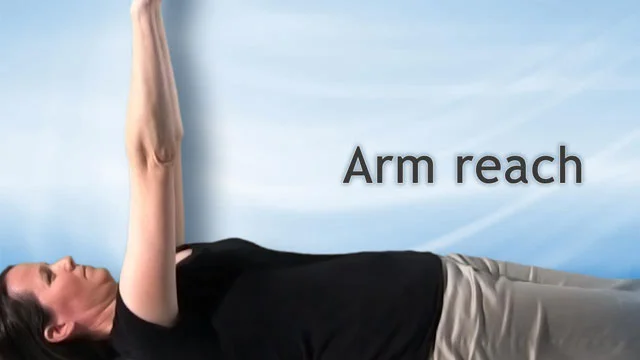
Arm reach:
- To do this exercise you can take a supine lying position. your arms and leg should be extended, and contract the abdominal muscles.
- Reach left arm toward the sky, lifting it until the shoulder blade comes off the floor.
- Hold for five seconds.
- Return arm to the ground.
- Repeat this on the right side.
Lying down an external rotation:

- To do this exercise you have to lie on the right side on the firm surface hold a lightweight dumbbell in the upper hand.
- Flexed the top elbow to 90 degrees, keeping the upper arm against the side of the body and letting the weighted hand rest toward the ground in front of the body.
- The elbow should be against the side of the body, rotate the arm at the shoulder, bringing the weight toward the sky.
- Slowly lower the dumbbell arm back to the beginning position.
- Do it on the left side of the body.
- Hold a small towel in the armpit while doing external rotation to diminished stress on the shoulder joint.
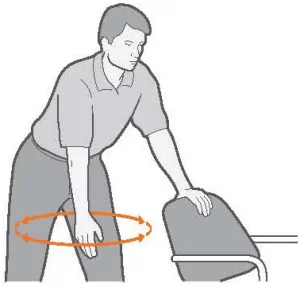
Pendulum:
- To do the pendulum exercise you have to Lean forward in a standing position with your left arm hanging freely. Use the opposite arm to brace against a chair to take support.
- Smoothly swing the hanging arm from the lateral to the medial side, forward and backward, and in a circular motion.
- Slowly return to a beginning position.
- Repeat on the other side.
Crossover arm stretch:
- To perform this exercise you have to raise one arm so that it is perpendicular to the ground and extend it straight without locking it.
- Move the wrist of the extended, lifted arm with the other hand.
- Slowly pull the hand across the front of the body, trying to hug the chest with the arm.
- Hold the stretch for five seconds before slowly releasing it.
- Repeat this on the opposite side.
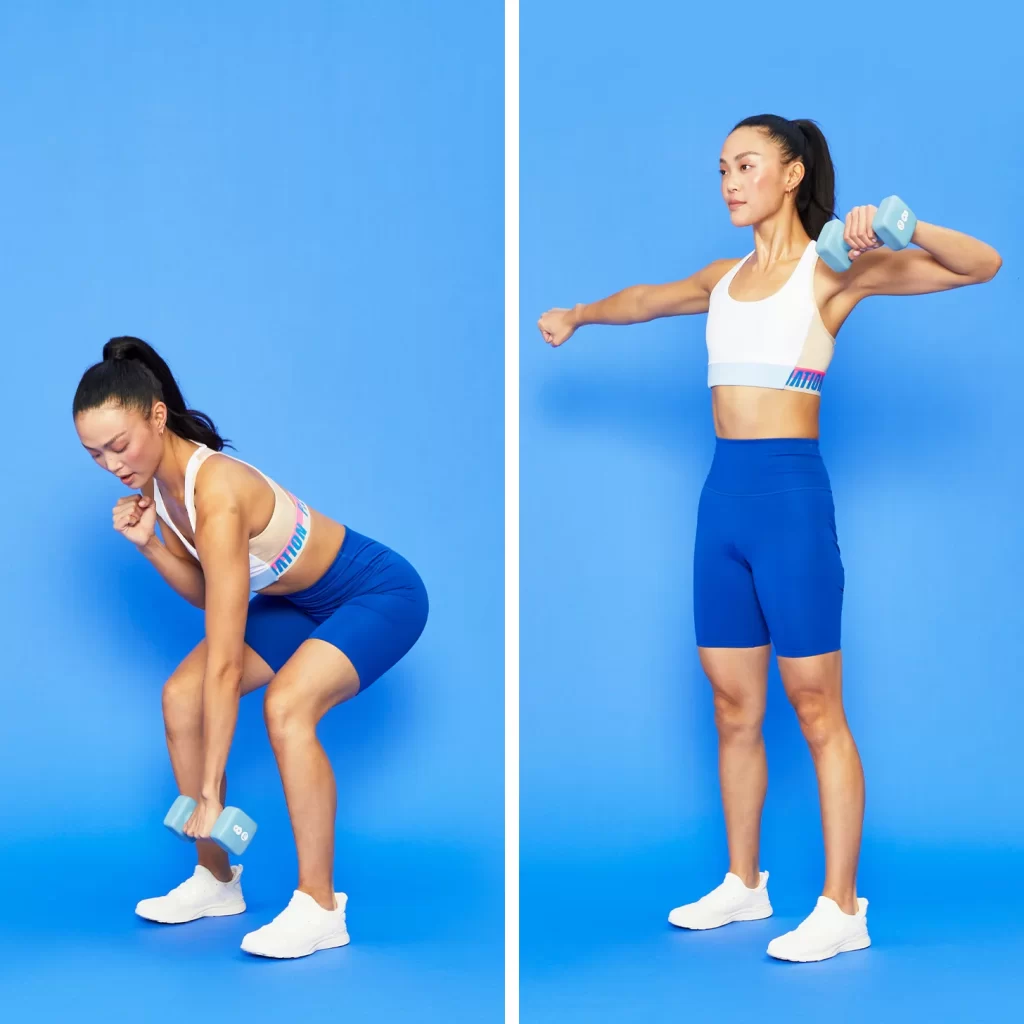
Lawnmower:
- To perform a lawnmower Place your right foot slightly forward so that the feet are shoulder-width apart and hold a low-weight dumbbell in one hand.
- The free hand is kept on the hip, lean slightly forward, and flexed the knees so that the weight is parallel to the opposite knee.
- Move the elbow of the exercise arm with the weight back to the body.
- Return slowly to the initial position.
- Repeat, working up to 2–4 sets of 10–12 repetitions.
- Repeat this on the opposite side.
Two-arm wall stretch:
- To perform this stretch you have to Stand up straight with the back supported by the wall.
- Raise both arms sideways into an L-shape with the upper arms parallel to the ground, keeping the arms as flat against the wall as possible.
- Maintaining the elbow flexion, move the arms up the wall to bring the hands closer together and then move them back down.
- Return to a starting position.
High to Low Rows:
- This exercise requires a steady object and resistance bands. wrap the bands to the steady point and set them above shoulder height.
- Lower down any one knee and it should be in line with the rest of your body.
- Hold the band with both hands and slowly bring it towards your chest, squeeze your scapula together as you do this move.
Reverse Fly’s:
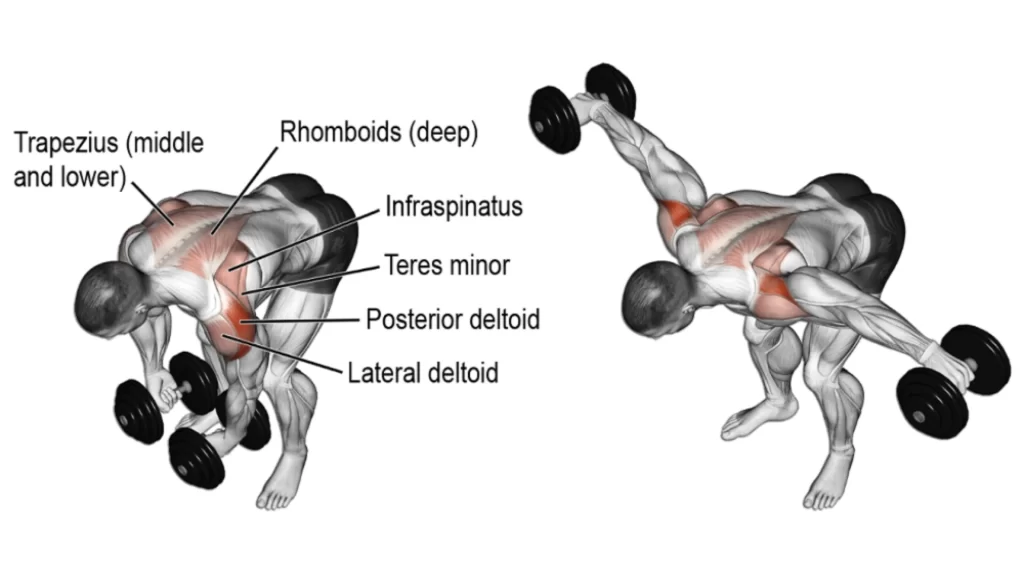
- To do a reverse fly you have to hold a set of dumbbells. Begin with your feet shoulder-width apart and a slight bend in the knees.
- Your back should be straight and hinge slightly at the hips. Hold a dumbbell in both hands and extend your arms away from your body and avoid elbow flexion.
- Squeeze your scapula together and try to avoid your arms bring above shoulder height.
Overhead Press:
- Overhead press can be an aggressive exercise for your rotator cuffs, but consider these two points:
- This exercise utilizes posterior rotator cuff muscles with pushing.
- You can remove the difficulty in this overhead press by doing it with no weight at all initially, and just trying to increase your currently available range of motion.
- This exercise will train your rotator cuffs to stabilize function in a natural movement pattern.
- No matter if you are doing a barbell, kettlebell, dumbbell, or no weight at all initially, overhead pressing is great for improving your shoulder strength, mobility, and function.
- If you like to rehab your shoulders at your pace, a progression for this exercise is initially with no weight at all, do some exercise with filled water bottles, and then slowly used the dumbbells.
Inverted Row:
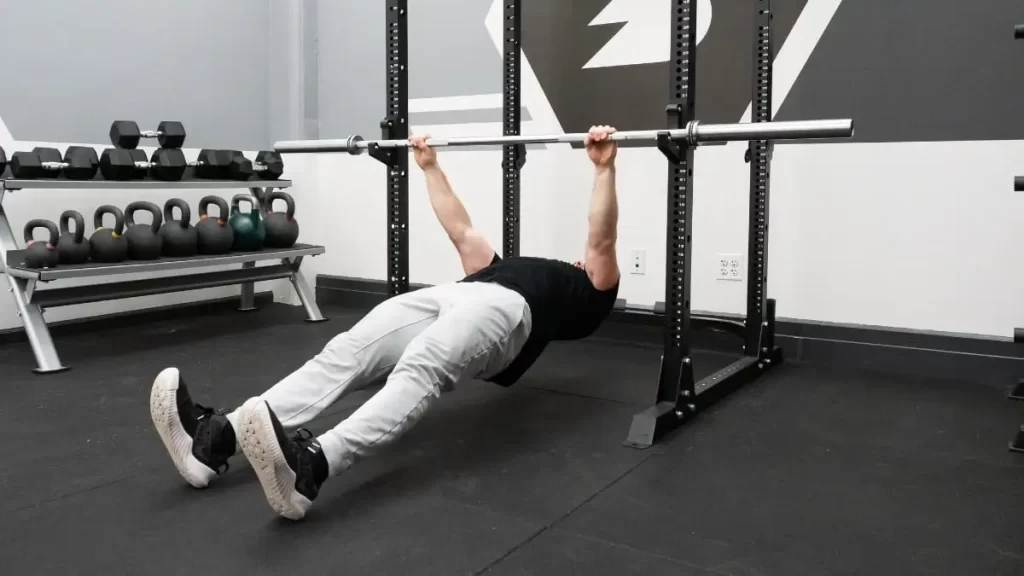
The inverted row will work your anterior rotator cuff in a pulling exercise.
- This exercise is mostly done for its stability, and It is possible to do it at home. You can hang under a steady object, hang from a broomstick laid over two steady chairs, or maybe hang some kind of straps or gymnastic rings from your ceiling.
- If you are unable to train inverted rows or want to start even lighter, you could substitute this exercise with dumbbell rows, or any other rowing variant.
- You have to Stand in front of a squat rack or Smith machine.
- Set the barbell to the desired setting. Begin this with waist height. This will allow your arms to fully extend by maintaining your body off the ground.
- Get under the bar and lie down. Look up at the ceiling.
- Reach up for the bar. Your arms should be fully extended so you can hold the barbell with an overhand grip. Your body will be suspended or just off the ground, with your heels being the only thing in contact with the ground.
- squeeze your abdominal muscles and butts to brace the lower back and keep your body in a straight line from your waist to your feet.
- Pull yourself up, leading with your chest. The barbell or rings can be taken at chest height when at the top movement. Your body remains in a straight line and your glutes and core contract throughout the entire movement. The barbell does not need to touch your chest. Get it as close as possible.
- Hold for two seconds and make sure the scapula should be retracted before slowly lowering to the initial position, with your arms fully extended.
- Do this for 3 sets of 8 to 15 repetitions.
Dumbbell Lateral Raise:

- You have trained to press and pull, and now you will train abduction with the dumbbell lateral raise. This exercise will work your rotator cuffs’ strength and function
- A dumbbell lateral raise can also be helpful back to do without any weights at all. In progression you can use filled water bottles then you may progress by using light dumbbells.
- Stand tall, a dumbbell in each hand.put your arms by your sides, palms facing in. Put your feet roughly hip-distance apart. Check your posture roll your shoulders back, contract your core, and gaze straight ahead.
- Elevate your arms simultaneously just two inches out to each side and hold for a second. When you hold at this point your trapezius is disengaged and more focused on the deltoid.
- Lift the weight up and out to each side, your arms should be almost completely extended, stop when your elbows reach shoulder height and your body is making a “T” shape. Inhale when you raise the arm.
- Hold at that point for two seconds at the top of the movement.
- Smoothly Lower the dumbbell, bringing your hand back to your sides. Exhale as you lower the weight.
Up-the-back stretch:
You will perform up the back stretch if you have regained most of your range of movement and muscle strength. You can apply this stretch in different ways.
- Mild stretch: Place your hand on your backside. Hold at that point to stretch your shoulder.
- Medium stretch: With your other hand, hold your injured arm (palm outward) on your back by the wrist. Gently Pull your arm up to stretch your shoulder muscle.
- Advanced stretch: Put a napkin over your other shoulder. Put your injured arm hand behind your back. Now hold the other end of the towel With the opposite hand, hold the front end of the towel in front of your chest. Slowly pull the front end of the towel. This will help your hand farther up your back to stretch your shoulder muscles.
- Hold these stretches for at least 20 to 35 seconds. Repeat it 2 to 4 times.
Pectoral stretch:
- To do this stretch you have to Stand about an arm’s length away and hold onto a solid surface. You could use a countertop, a doorknob, or the back of a steady chair.
- With your knees slightly flexed, flexed forward with your arms extended.Now slowly Lower your upper limb, and let your shoulders stretch.
- When you feel some stretch in your shoulders, you may need to take a step or two backward.
- Hold for 15 to 20 seconds. Then stand up and relax. Take a forward step if you have stepped back so you can keep your hands on the solid surface.
- Repeat 2 to 4 times.
Wall climbing:
To the side:
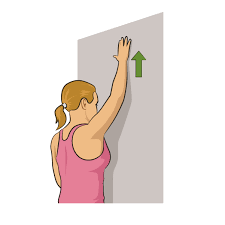
- To perform this exercise you can avoid any movement that is straight to your side, and be careful not to arch your torso. Place your arm about thirty degrees to the front of your side. You have to stand with your side to a wall so that your fingers can just touch it at an angle of about 30 to 40 degrees toward your body. now walk the fingers of your injured arm up the wall as much as you can without pain. Your shoulder does not shrug while lifting the arm.
- Hold this position for a count of 15 to 20 seconds.
- Move your fingers back down to the normal position.
- Repeat at least two to four times.
To the front:
- You have to stand near the wall Facing it, and your fingers can just touch it.
- walk on the fingers of your injured arm up the wall as much as possible.
- Hold your arm in that position for at least 15 to 20 seconds.
- Gently walk your fingers back down to the start position.
- Repeat at least 3 to 4 times. Try to reach higher each time.
Wall push-ups:

- To perform this exercise you have to Stand facing a wall, about ten inches to fifteen inches away.
- Place your both palms on the wall at shoulder height.
- Slowly bend the elbows and take your face towards the wall. your whole lower body should be straight.
- Push back to where you initiate.
- Repeat 10 to 12 times.
- When you can perform this exercise comfortably against a wall then you can try it against a counter. You can then slowly progress to the end of a couch, then to a sturdy chair, and finally to the ground.
Retraction scapular exercise:
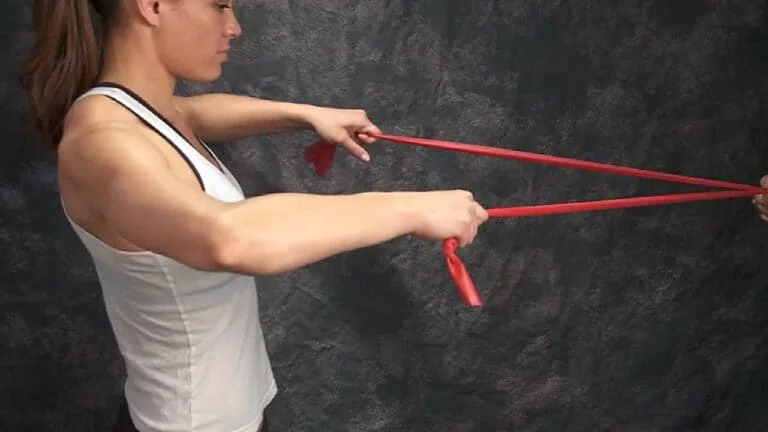
- To perform this Retraction scapular exercise, you can require an elastic exercise band like surgical tubing or Thera-Band.
- Place the band around a steady object at about trunk level. Both hands should grab an end of the elastic band.
- With your elbows by your sides and flexed to 90 degrees, pull the elastic band backward. Your scapula should move toward each other. Then move your arms backward where you can be started.
- Repeat 10 to 12 times.
- If your have your shoulders are mobile, then try this exercise with your arms lifted out by the sides.
- Keep elbows at a ninety-degree angle.
- Raise the elastic band upward about shoulder level. Taut the band back to move your scapula toward each other. Then move your arms back to the initial position.

Isometric shoulder external rotation:
- To do this exercise you can stand in a doorway with your elbow flexed 90°and the dorsal aspect of your wrist pressing against the door frame, try to press your hand externally rotated into the door frame.
- Hold for five seconds. Do three sets of ten.
Isometric shoulder internal rotation:

- To do an internal rotation exercise you can stand in a doorway with your elbow bent ninety degrees and the Palmer aspect of your wrist pressing against the door frame, Now press your palm internally into the door frame.
- Hold for five seconds. Do three sets of ten.
Wand exercise:
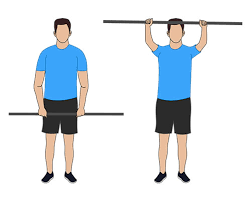
Flexion:
- To do this exercise you have to Stand upright and hold a stick in both hands, your palms should be down.
- Stretch your both arms by lifting them over your head, your elbows should be straight.
- Hold for five seconds and return to the initial position. Repeat ten times.
Extension:
- To perform this exercise you can Stand upright and hold a stick in both hands behind your back.
- Move the stick away from your back. Hold this position for five seconds. Relax and return to the beginning position.
- Do it ten times.
External rotation:
- To perform this exercise you have to Lie on your back and hold a stick in both hands,palms should be up.
- Your upper arms should be resting on the ground, your elbows by your sides and flexed ninety degrees.
- By getting the help of one arm, push your other arm out and away from your body by keeping the elbow at the arm being pushed at your side. Hold the stretch for five seconds. Do it 10 times.
Shoulder abduction and adduction:
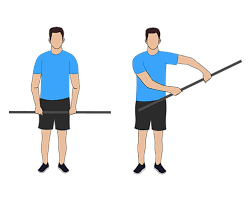
- To do this exercise you can Stand upright and hold a stick in both hands, palms should be facing away from the body.
- Rest the stick against the anterior of your thighs.
- Both elbows should be straight and use one arm to push your other arm by the lateral side and up as much as possible.
- Hold for five seconds. Do it 10 times.
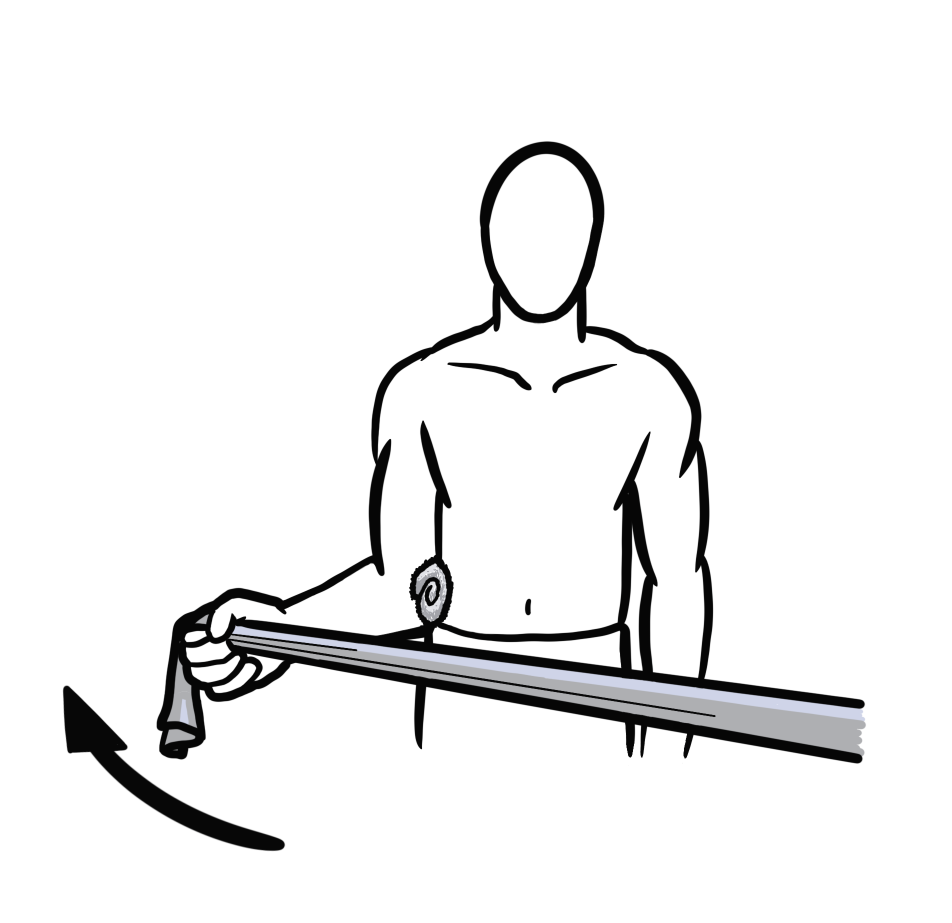
Resisted shoulder external rotation:
- To perform this exercise you can stand sideways next to a door. Hold the hand fart away from the door across your umbilicus.
- With that hand hold tubing that is connected to a doorknob at trunk level. Place your elbow by your side and rotate your arm externally and away from your waist. Make sure you keep your elbow flexed 90 degrees and your forearm parallel to the ground.
- Repeat ten times. Do three sets of 10 repetitions.

Resisted shoulder internal rotation:
- To do this exercise Hold tubing connected to a doorknob at the torso level.
- Put your elbow by your side, and rotate your arm inward towards your body.
- The forearm should be parallel to the floor. Do three sets of ten repetitions.
Scaption:
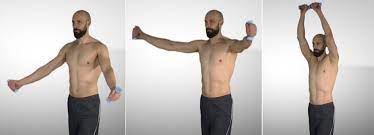
- To do this exercise you can Stand with your arms at your sides and with your elbows extended. Slowly pull your arms to ear level.
- Your arms should be spread apart when you raise them so that they are only slightly anterior to your body (at about a thirty-degree angle to the front of your body). Point your thumbs toward the ceiling.
- Hold for 2 seconds and take your arms down slowly.
- Do three sets of ten repetitions. Hold a soup can or lightweight dumbbell when performing the exercise, and gradually increase the weight.
Horizontal abduction:
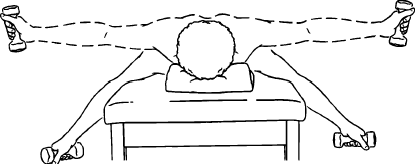
- To do this exercise you can Lie on a table or the edge of a bed face down with one arm hanging down straight to the floor.
- pull-up your arm to the lateral side, with your thumbs pointed toward the sky until your arms are collateral to the surface.
- Hold for three to four seconds and then gently lower down.
- Start this exercise without weight. As your arms get stronger add a lightweight or hold a soup can. Do 3 sets of ten repetitions.
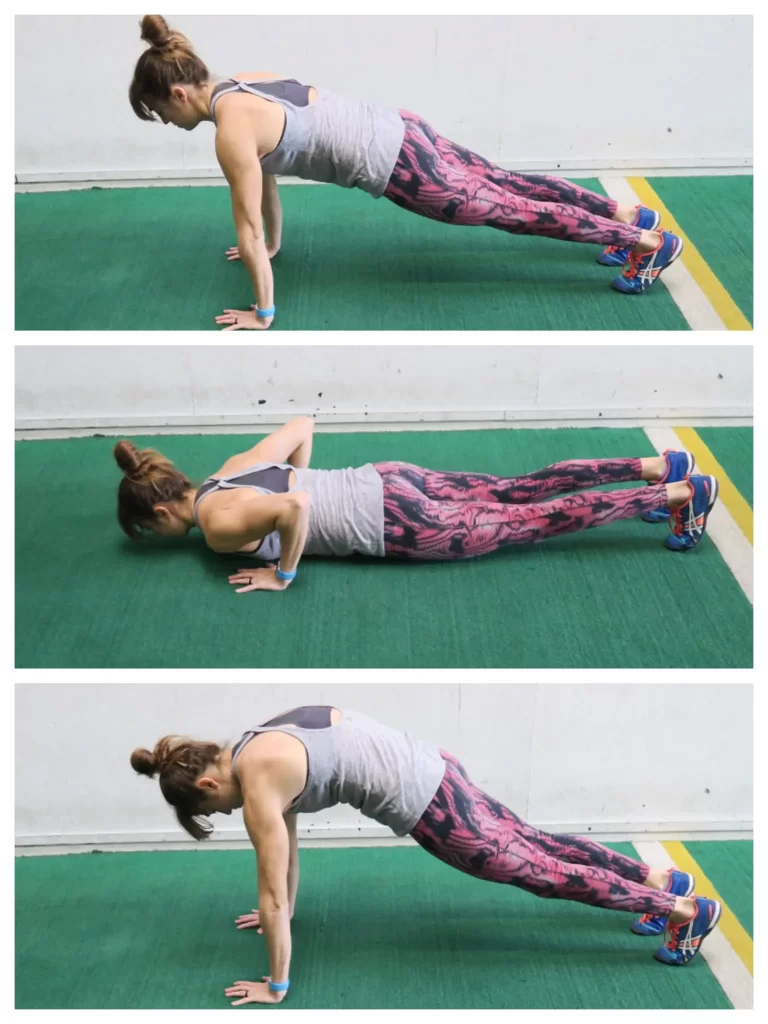
Push-ups with a plus:
- To do this exercise you Begin it on the floor on your hands and knees. The arms should be apart to shoulder width and raise your feet off the surface.
- Arch your back as much as possible and round your shoulders (this is the “plus” part of the exercise). flex your elbows and lower your body to the mat.
- Return to the initial position and arch your back again. Do three sets of 10 reps.
Tips for a Healthy Rotator Cuff:
- Do some Stretching exercises before a workout.
- Stretching the shoulder before the activity is predominant in throwing athletes.
- Strengthen the rotator cuff muscle.
- Strengthen the core and lower limb muscles.
- Re-establish proper throwing mechanics.
- Use ice and anti-inflammatories as needed.
FAQ
Should I exercise if I am already suffering from rotator cuff pain?
You may feel a little soreness with muscle-toning exercises. You can apply ice to the shoulder can help you to decrease pain but if you experience sharp or severe pain, stop doing exercises for a few days. Sitting or standing while holding a 1 kg weight in the affected hand.
What are the warning signs of a rotator cuff tear?
If you feel dull ache pain over the shoulder joint.
Disturb sleep.
Difficult to comb your hair and unable to reach behind your back.
Be accompanied by arm weakness.
What is the home remedy for shoulder pain?
Stop doing things that induce pain and try to avoid painful activities. Do not lift heavy weights or do the overhead activity until the shoulder pain is gone. Give Ice therapy to the shoulder can help to subside pain and feel better. Apply over-the-counter pain relievers like ibuprofen (Advil, Motrin IB, others) or acetaminophen (Tylenol, others) to relieve pain.
What movements are bad for the rotator cuff?
People who suffer from shoulder injuries should initially avoid exercises that encourage any movement or movement overhead. strictly avoid activities like throwing a ball or specific weight training at the gym like overhead presses and pull-ups.
Should I do rotator cuff exercises every day?
a person with a rotator cuff injury sleeps on his back to get less pressure on his shoulders. People avoid exercising for rotator cuff muscle every day, just like other muscles in our body the rotator cuff muscles also need some time to recover between two sessions.
In many cases, however, exercise can help you to strengthen your muscles and enhance flexibility. When you like to start doing rotator cuff exercises, take it slow, warm up by stretching, and consult with your doctor or physical therapist to avoid further injury.
How can you make the rotator cuff strong?
There are tips for a Healthy Rotator CuffBuy vitamins and supplements
You have to stretch before exercising.
Stretching over the shoulder before exercise is paramount in throwing athletes.
Do some Strengthening exercises to the rotator cuff.
Re-induce proper throwing mechanics.
Apply ice and anti-inflammatorie drugs when needed.

